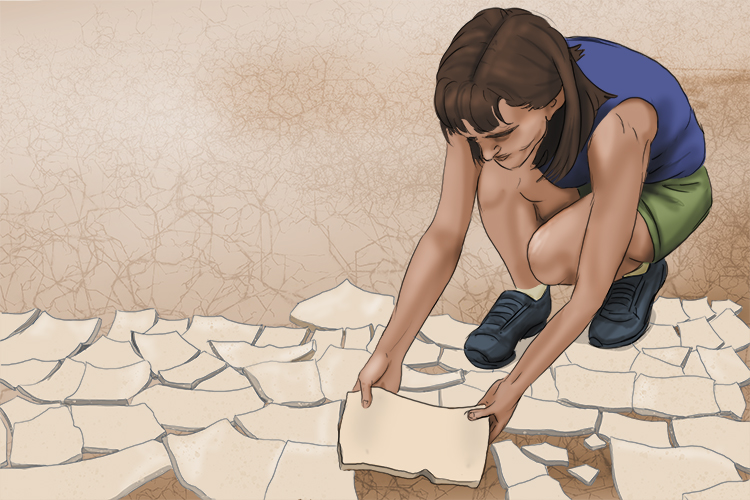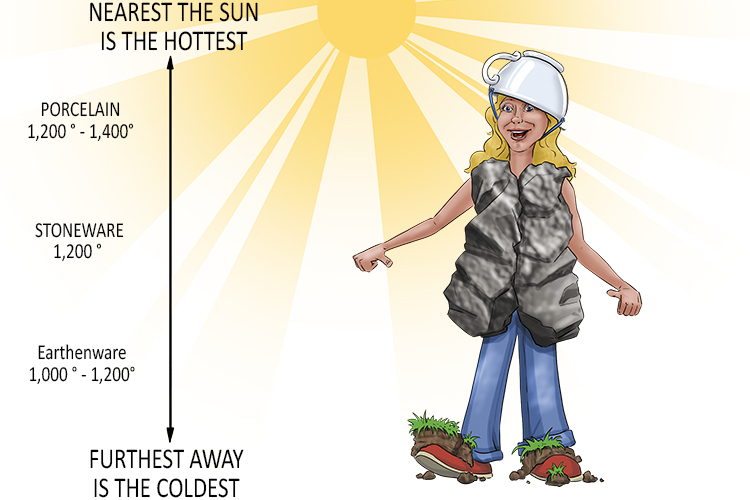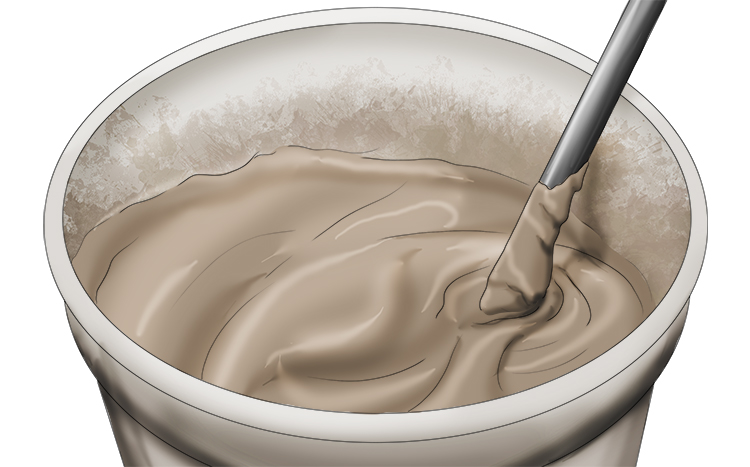Ceramics and Pottery
Pottery and ceramics are one and the same.
The word ceramics derives from Greek and translates as 'of pottery'.
Both pottery and ceramics are general terms that describe objects which have been formed from clay, hardened by baking at a high temperature (fired) and decorated or glazed.
What is clay?
Clay is made up of the finest particles of rock eroded by wind and rain which gather at the bottom of rivers and streams where they stick together and are compacted. Evidence of this is visible on dried river beds, where blocks of hardened clay can be seen as the bed cracks and dries:

Clay can be divided into several classes based on where it is taken from. These classes of clay are made based on its characteristics and at what temperature it must be fired at in order for it to reach its optimum hardness and durability.
These classes can be broadly divided into earthenware, stoneware and porcelain.
Earthenware (tends to be reddish in colour)
This is one of the oldest materials used in pottery and is used extensively for tableware and for house-building using clay bricks.
Baking temperature (fired) at between 1,000°C and 1,150°C
The baked clay produces a slightly porous, coarse product. To overcome its porosity, the fired object is covered with finely ground powder suspended in water (glaze) and is fired a second time.
Terracotta is a reddish form of earthenware, often used for garden plant pots.
Stoneware (tends to be grey in colour)
Baking temperature (fired) at around 1,200°C
Stoneware is baked until it is made glass-like (vitrified).
Because stoneware is non-porous, glaze is only applied for decorative purposes and this is baked on again.
Porcelain (tends to be white in colour)
Baking temperature (fired) at between 1,200°C and 1,400°C
This is a white clay (called Kaolin) and because it originally came from China, it is known as China pottery. Again, glaze is only applied for decorative purposes and this is also baked on again.
Note: There are air-drying versions of all these clays but if air-dried pottery is made wet again, its form will rapidly disintegrate.
To remember that porcelain needs the hottest baking temperature, followed by stoneware, then earthenware, recall the following mnemonic:

This person was wearing a white (porcelain) hat, stones (stoneware) for a tunic and the earth (earthenware) had formed clumps on her shoes.
Slip
Slip is a liquid clay with the consistency of double cream.
Slip is made by adding dry powdered clay to water and mixing it using an electric food mixer. Alternatively you could buy it ready made in a tub.

Slip can be used to make:
1. Moulds
2. Joining pieces of clay together
3. Decorating clay by painting slip onto a clay surface or by using a slip trailer (like icing a cake)

Slip can be made in a variety of colours by adding oxides, or again you could just purchase liquid slip in different colours.




